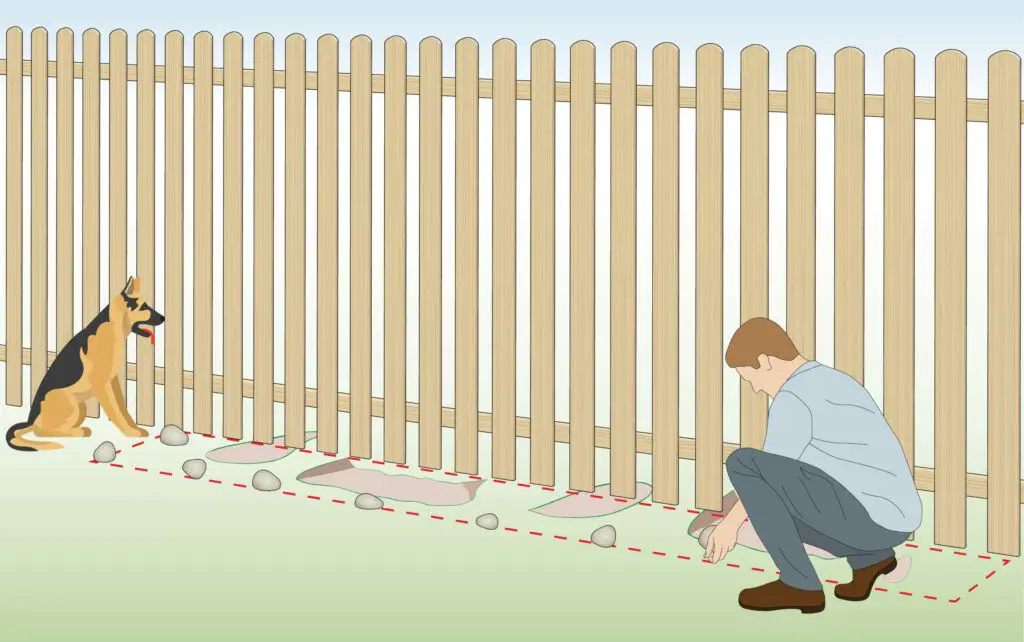Introduction
Both wireless and wired dog fences provide pet owners with an invisible boundary to keep their dogs safely contained in their yard. These fences work by delivering a mild static correction when the dog approaches the boundary, training them to stay within the designated area.
Wireless dog fences use a radio signal from a transmitter to establish a circular boundary around the yard. The dog wears a special collar that picks up the signal. Wired fences bury a wire around the perimeter that transmits a signal to a collar worn by the dog.
When considering wireless versus wired, there are pros and cons to each system to weigh regarding installation, adjustment, cost, effectiveness, and more. Looking at the key differences helps determine which system may work best for your needs.
What is a Wireless Dog Fence?
A wireless dog fence works by transmitting a radio signal from a central transmitter to a receiver collar worn by the dog. The transmitter connects to a transmitting wire that defines the boundary of the wireless fence. When the dog approaches the boundary, the receiver collar picks up the radio signal and administers a safe but startling static correction to alert the dog (How Does a Wireless Dog Fence Work?, 2022). This trains the dog to stay within the set boundaries without the need for an underground wire fence.
The radio signal from the wireless transmitter can cover a circular area with a radius of up to 90 feet for most systems. More advanced models using multiple transmitting antennas can cover a much larger area (Do GPS Dog Fences Actually Work?: Here’s Everything, 2022). The signal is coded to only interact with the compatible receiver collar, so it won’t affect neighbors. The rechargeable collar battery generally lasts 1-2 months before needing a recharge.
Pros of Wireless Fences
Some of the key advantages of wireless fences are their flexibility, easier installation, and less obtrusive aesthetics compared to wired fences. Unlike wired fences that require trenching and burial of boundary wires, wireless fences use a transmitter to establish a circular boundary, allowing them to cover oddly shaped areas and terrain a wired fence may struggle with (Source: https://vcahospitals.com/know-your-pet/the-pros-and-cons-of-invisible-fences-for-dogs). Installation takes just a few hours rather than potential days with a wired system. The transmitter communicates with a lightweight, waterproof collar on the dog, so there’s no visible fencing system or wires required, allowing for a cleaner look (Source: https://dogfence.co.uk/canine-advice/wireless-dog-fence-the-truth/). This allows wireless fences to work in areas like front yards where aesthetics may be more important.
Cons of Wireless Fences

Wireless fences tend to be more expensive than wired fences. The transmitters and collars required are more complex and costly to manufacture. According to one source, wireless systems can cost over $1000 for just a basic setup, whereas wired systems often cost half as much (The Pros and Cons of Invisible Fences for Dogs).
The wireless collars also require batteries that must be replaced periodically. This is an added inconvenience and expense compared to wired collars that don’t require batteries.
Additionally, wireless fences may have more ambiguous boundary areas than wired fences. The signals can fluctuate, especially in certain weather conditions, leading to inconsistent corrections. Wired signals tend to remain stable regardless of external factors. So wired fences generally provide more precise and consistent boundaries (Why Invisible Fences Just Don’t Work).
What is a Wired Dog Fence?
A wired dog fence, also known as an in-ground or underground fence, uses wires buried underground to create a boundary for your dog. The wires emit a radio signal that is picked up by a receiver collar worn by your dog. When your dog approaches the boundary, the collar will emit a warning beep followed by a safe but startling static correction if your dog continues into the boundary zone.
The underground wires connect to a transmitter which modulates the signal being sent through the wire. The collar’s receiver picks up the signal and delivers the correction. The transmitter has adjustable levels so you can tailor the correction to your dog’s temperament. Wired fences require trenching or laying wires around the perimeter you want to contain your dog within (HowStuffWorks).
The key components of a wired dog fence system are:
- Transmitter – This connects to the buried wire and transmits the radio signal.
- Wire – The insulated wire is buried around your yard to mark the boundary.
- Receiver Collar – Worn by your dog and picks up the signal from the wire.
Pros of Wired Fences
One of the biggest advantages of wired dog fences is that they are generally more affordable than wireless systems. The materials needed for wired fences like boundary wire and base stations tend to cost less than the transmitters and collars required for wireless systems. This makes wired fences the more budget-friendly choice for many pet owners. According to PetSafe, a basic wired fence kit can be purchased for $200-300 while a basic wireless system may start around $300.
Wired fences are also known for providing very accurate property boundaries. Since the boundary is set physically in the ground, dogs receive a very clear message of where they can and cannot roam. There is less potential for “gray area” confusion compared to wireless systems. The PetSafe website states that their wired systems can create boundaries within 1-3 feet of accuracy.
Additionally, wired fences require less maintenance over time than wireless systems. There are no batteries to frequently recharge and no potential for signal interference from other devices. As long as the wire remains undamaged, a wired fence can work reliably for years with little upkeep required. This makes them a very convenient, “set it and forget it” containment option.
Cons of Wired Fences

A major downside of wired dog fences is that they require permanent installation underground around the perimeter of your yard. Since it involves burying wire, you will likely need to hire a professional to properly set up a wired dog fence system. This can increase the cost and complexity compared to a wireless system.
Wired dog fences can also be more aesthetically obtrusive. You may see some evidence of the wire around your property, which some homeowners dislike. The wire-free nature of wireless dog fences provides a cleaner look.
Additionally, wired dog fences provide less flexibility if you want to adjust the layout or shape of the boundary. With wireless systems, it’s easier to tweak the fence area as needed. Overall, the permanent underground wire installation makes wired dog fences less adaptable.
Key Differences
The main differences between wired and wireless dog fences come down to installation, adjustability, boundary shape, and reliability.

Wired systems require burying wire around your property to mark the boundary, making them more labor intensive to install. However, this allows wired systems to have adjustable and customizable boundary shapes. Wireless systems are quicker and easier to set up, but typically only allow for circular boundary shapes [1].
Wireless fences use radio signals to create boundaries, which can be subject to interference and less reliable containment compared to physical wires. Wired systems use the buried wire to transmit containment signals and provide more consistent and dependable boundaries [2].
With wired fences, the base unit can be plugged in anywhere with access to power. Wireless base units need open access to broadcast signals, so placement is more limited. Wired systems are generally more customizable and flexible for larger or oddly shaped properties [3].
Which is Better?
When determining which type of dog fence is better, there are a few key factors to consider:
For most homeowners, a wireless dog fence is often the better choice. Wireless fences are quick and easy to install, requiring no trenching or burying of wires. They are also more affordable upfront compared to wired fences. Importantly, wireless fences provide more flexibility if you need to adjust the layout or size of your boundary over time. The wireless transmitter can simply be moved to change the radius of the circular boundary. With a wired fence, changing the layout would require digging up and repositioning the boundary wire.
Wireless fences do have limitations in terms of boundary customization options and maximum acreage covered. They also require regular battery replacement in the dog’s collar receiver. But for most typical suburban homes and yards under 1 acre, the ease of installation and flexibility of wireless systems often makes them the more practical choice.
Wired dog fences offer benefits like unlimited boundary size and customized layouts. They can provide more precise boundaries along property lines. But the high upfront installation cost and lack of flexibility make them better suited for large, rural properties. For small to medium yards, wireless systems provide similar containment at a fraction of the cost.
Overall, wireless dog fences offer the best blend of affordability, ease of use, and flexibility for most homeowners with dogs. But those with large properties or unique boundary requirements may find wired fences worthwhile despite the greater effort and expense.

Conclusion
Overall, there are pros and cons to both wireless and wired dog fences. Wireless fences provide more flexibility and portability, while wired fences are more customizable and reliable. Here’s a quick summary of the key points:
Wireless Pros: Easy to install, adjustable boundary, portable for travel or moving. Wireless Cons: Can have interference issues, limited customization options, battery powered collar.
Wired Pros: Very customizable boundary, consistently reliable signal, collar has unlimited battery. Wired Cons: More complex installation, not portable, dogs can dig under.
For most homeowners, a wired dog fence may be the best choice if you don’t plan to move and want to contain your pet securely within your yard. The installation process is more involved, but a wired system provides the most consistent and customizable results long-term. However, if you travel frequently or want flexibility to take the fence with you, a wireless system would be preferable.
Ultimately, assess your specific needs and yard setup to determine which type of dog fence would work best for you. Take the time to properly plan the boundary layout and training regimen to ensure your system keeps your pet safe, contained, and comfortable on your property.